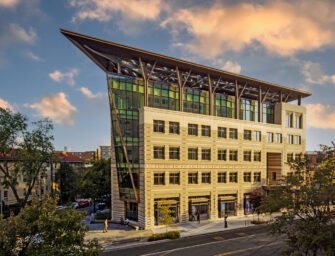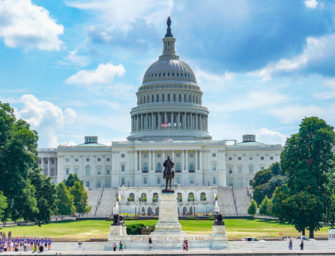How AGU Is a Leader in the Fight against Climate Change
AGU represents a global community of more than 60,000 Earth and space scientists. The peer-reviewed research of our members has unequivocally concluded that climate change is real, occurring now, and is driven by human activity. The threat it poses to our human survival and the environment is real and serious. But there is hope. Collectively, we can address this challenge. This is the theme I carried with me to the American Climate Leadership Summit (ACLS19) this week in Washington, D.C.
This summit aims to accelerate actions to address climate change collectively. In my role as Executive Director/CEO of AGU, I had the honor of participating in a panel discussion titled, “Breakthroughs on Clean Energy, Efficiency, and Storage.” During the event, I focused on how community outreach, organizational actions, and engagement with policy makers can combat climate change.
When I look back over the course of my life and career, there wasn’t just one moment that served as motivation for me to want to enact change to save this planet. I’ve experienced severe weather that has damaged my home and I have increasingly seen the linkage between climate change and human health. Through a series of events, including the work I did at the American Institute of Architects and now at AGU, I have a deeper understanding of the challenges — as well as the opportunities — our society faces.
At ACLS19, I spoke about how organizations can “live their mission” by taking many actions to help combat climate change. AGU’s own net zero energy building renovation is leading by example by demonstrating that — even when located on a tight urban footprint — an entire building can reduce its carbon footprint and target net zero energy. My hope is that AGU’s inventive design and energy-saving strategies will embolden communities, local leaders, policy makers, and building owners, as well as the broader building industry, to support and embrace these strategies as effective ways to address climate change. Even if they each undertake just one key strategy that AGU has employed, those combined efforts can have a huge impact on creating a more sustainable future.
As I’ve seen throughout my time at AGU, scientists play a crucial role in ensuring policy decisions are made based on evidence, research, and discoveries. AGU’s community of Earth and space scientists can access resources, workshops, and hands-on support to effectively communicate with broader audiences — including journalists, policy makers, and the public — about the value and importance of science. AGU’s programs like Sharing Science and its initiative Voices for Science help amplify scientists’ voices by building powerful dialogues, as well as providing resources and training.
Outreach, particularly through community-based science, can help solve local challenges related to climate change, natural hazards, and natural resources. I highlighted AGU’s Thriving Earth Exchange as an example of scientists working with communities and local leaders to design and implement solutions that can result in more resilient responses to the effects of our rapidly changing climate. Various governmental entities are employing initiatives to address these challenges at local, regional, national, and global scales. These efforts are complemented by a growing number of individual, nonprofit, and private actors.
We can’t solve this problem alone. We need stakeholders from all sectors and backgrounds of society to address climate change and come up with a suite of creative, scientifically sound solutions that can be employed on a large scale with speed and efficacy. We all depend on it.




There are no comments
Add yours